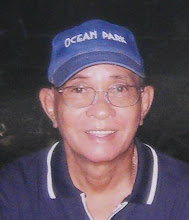“SANGHIYANG”
“Sanghiyang” is coined from two Tagalog words, “Isa” (one) and “hiyang” (compatible), meaning, compatible whole or “nagkakaisang kabuuan”. In Alfonso, “Sanghiyang” is a cultic ritual preparatory to the rite of Ancestral Offering, Mediumistic Healing, Ritual House Blessing (Basang-Gilagid), and Dance on Fire (Sayaw sa Apoy).
As noted by Alejandro Roces, “it used to be a Pagan rite but was later imbued with Christian connotations and biblical justifications” as it is claimed to be a hang over of Noah’s offering of Thanksgiving after the Universal Deluge (Genesis: Viii:20).
As a prelude to the Thanksgiving Ritual, “Sanghiyang” is usually performed during the month of January by different families. There used to be so many “magsasanghiyang” who can perform the ritual but many of them have already died and only a handful of their descendants inherited the capability to do the ritual.
In every “Sanghiyang” ritual there is always an “altares” where they arrange statues of Saints, Angels and the crucified Christ together with whatever religious icons they can still add.
In front of the “altares” is a low-legged table locally called “latok” where they arrange the different offerings that they call “dulang”. The “dulang” is full of foods, such as “pinaupong manok, suman, maruya, boiled eggs, rice and other goodies and drinks with their confusing symbolisms either from the Old or New Testaments. A very eye-catching offering are the “Tau-tauhan” biscuits of 7 “tao”, 7 “kabayo” and 7 “kumpay”. These are for the elementals which are generally represented by the 7 dwarves.
The biscuits are made out of ordinary flour and water without any added ingredients. At the end of the celebration they are buried together with pieces of the other offerings.
The more affluent the sponsor of the “Sanghiyang “ the more offerings there are and the more “magsasanghiyang“ join the ritual with their own style of chanting and dialoguing with the Superpower through the use of a pendulum usually made of necklace that hangs one or more antique medallions serving as their “agimat “ or amulet.
Sumptuous foods are offered to everyone but first initiated by the “Walong –Gulang” who represents the family of Noah who where saved during the Universal Deluge.
A very simple “Sanghiyang” could also be performed preliminary to mediumistic healing with only a little rice, one boiled egg and “maruya”.
Among articles and write-ups coming out of books and magazines, I often encounter that “SAYAW SA APOY” is also called “SANGHIYANG”. This is wrong because based on what I have personally seen and according to those who are involved in doing them, “SANGHIYANG” & “SAYAW SA APOY” are two distinct rituals.
“Sayaw sa Apoy” is only a part or additional show to glamorize the performance of the “Sanghiyang” which could be performed separately. “Sayaw sa Apoy”, however, cannot be done without first doing “Sanghiyang” as preliminary ritual.
“Sanghiyang” is actually a preliminary ritual for Ancestral Offering based on the Old Testament. This is always done in preparation for other rituals such as Fire walking or Fire Dancing. “Basang-Gilagid”, guiding to eternal rest one who died, or healing someone bewitched.
It is also performed before searching for a lost item, such as jewelry and other valuables. After it, the “Barka” (or Magsasanghiyang) dialogues with the Superpower through her “Timbangan” (pendulum).
From the book TINGKORAW: Alfonso's History and Legend by jett e. avinante, m.d.
Subscribe to:
Post Comments (Atom)

3 comments:
glad to be part of a clan that performs the famous sanghiyang...
Thank you for sharing this interesting post.
By the way, may I send you an email please, Mr. Avinante?
Your e-mail is welcome anyime
Post a Comment